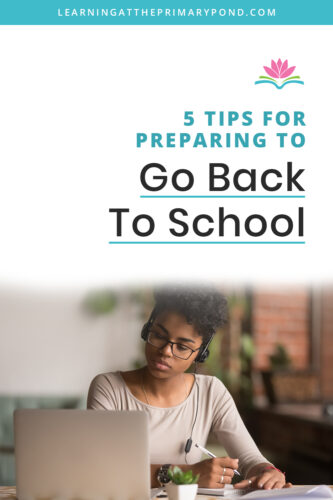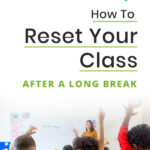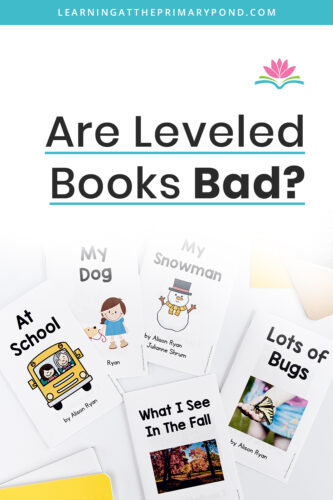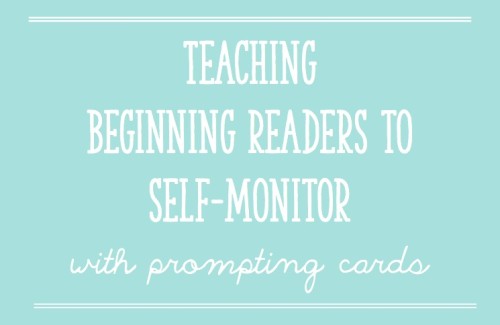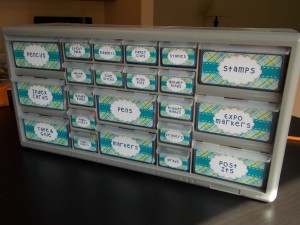You’ve enjoyed that “end of the school year” feeling and then the relaxation of the summer, but now the realization that you need to gear up to do it all again is upon you…
How do you psych yourself up to take on everything as a teacher? How do you build on the strengths of last year while also making improvements? (And not get overwhelmed by it all!)
In this blog, I’ll give you 5 tips that will help you prepare for heading back to school. I’ll talk about some things that might help both inside and outside of school. Work impacts life and life impacts work, right?
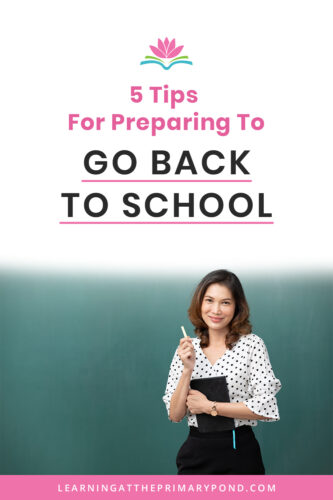
Tip #1: Reflect on your reflection!
At the end of the previous school year, you may have taken some time to stop and jot down key aspects of your classroom that you really liked. This could be related to the physical classroom setup itself (the way you had desks arranged, where supplies were located) or it could be aspects like pacing of lessons or reward systems.
You may also have jotted down some things that you didn’t like or want to tweak for next year (i.e. how you run centers, your behavior management system, etc.).
Before you dive into making lots of plans or changes based upon those reflections, it’s important to pause and reflect on those reflections!
First, take a look at your “to change” list. What is required to make these changes? Will you need to prep tons of new materials or write tons of new lessons?
While it’s great that you have big dreams and plans, it’s usually not feasible to change everything at once. Pick and choose a couple of “big impact” items that you want to tackle this year.
(I speak from experience on this…for years, I’d dive into a new school year with TONS of well-intended plans of what I wanted to accomplish. It was just too much, and I ended up feeling burned out by early October!)
In addition to choosing your “big impact” items, consider any other circumstances that may not be in your control.
For instance, maybe you loved setting up your desks in pods, but now your principal is asking to only set up desks in partners to facilitate think, pair, shares. Or maybe you really didn’t love your science curriculum, but your administrator is saying you’re going to use it for at least one more year before purchasing a new one.
You might also consider doing some reflection on work-life balance. What would make life easier for you or better for you this year? Do you need to commit to meal-prepping or leaving work at a certain time most days of the week? Pair up with an exercise buddy?
Tip #2: Plan long range.
I totally understand that planning before the school year begins can feel super overwhelming. You haven’t even met your class yet, but you’re supposed to plan out your lessons for months?!
Truly, though, this will help make the year much smoother. You’ll feel more in control of the content, pacing, and the goals you have set for your students. And then you can adapt and be flexible based upon your students’ needs!
For this process, I like to start with a school calendar just so I can clearly see how many instructional days I’m working with. There are of course breaks, holidays, school events, etc. that need to be considered when planning.
Next, I start to look at how the literacy blocks are laid out. For example, do I have a designated time for small group phonics instruction every day? Will I have time to do grammar each day or just a few times a week? This will help dictate what is actually practical for my day to day and weekly schedule. I can break down the minutes per day/week that I have to spend on a particular subject.
Then, I look at all of the scope and sequences at once. This way, I can see if there are certain objectives that might pair better together. If you’d like to get my FREE literacy scope and sequence, click here for Kindergarten and click here for 1st and 2nd grade.
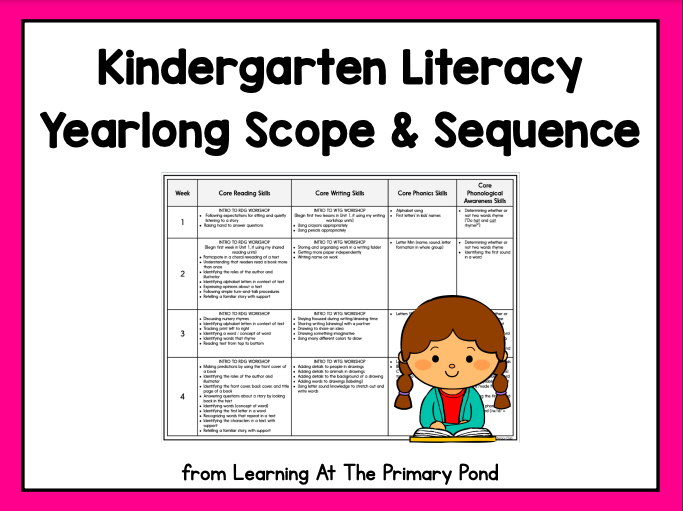
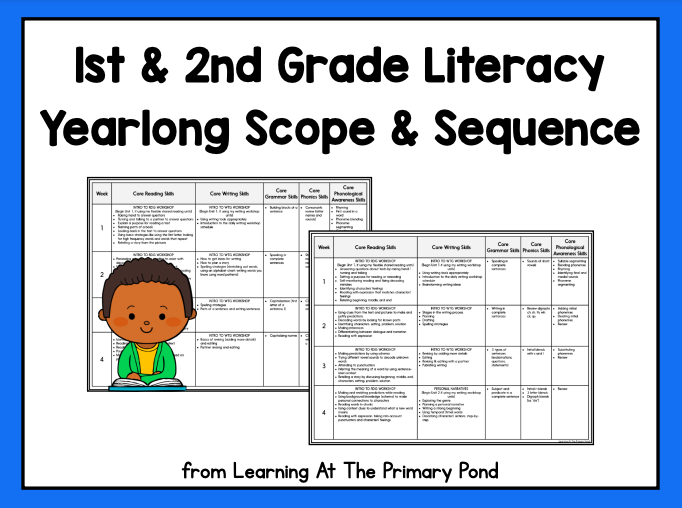
This big process of long range planning takes time, but it’s definitely worth it! To read more about “How To Use A Scope and Sequence To Plan Long Range,” click here.
Tip #3: Have beginning-of-the-year assessments chosen and ready to go.
Students (and teachers) have really been through a lot these past couple of years. I bet you’re seeing, now more than ever, huge ranges of academic ability within one classroom. You might have a student entering 1st grade still learning how to identify letters. You also may have another 1st grader already reading chapter books! So how do you manage all of that?
I highly recommend finding an assessment that’s comprehensive, easy to use, and gives you tangible data to act on. Many curriculums come with some sort of beginning of year assessment. You might also have some sort of school-wide assessment that you’re required to give. You might not be able to do all of them, so prioritize which assessments you are absolutely required to give and which ones are going to give you helpful, actionable data to work with.
In my free phonics assessment, there are 3 parts:
- Letter-Sounds Diagnostic – In this portion, students are asked to produce the sounds that each of the 26 letters makes.
- Diagnostic Spelling Test – Students will be asked to spell words focused on each of the skills provided in the assessment.
- Diagnostic Word Reading Assessment – Students will be asked to read words focused on each of the skills listed in the assessment.

Then, coming out of the assessment, you’ll be able to make adjustments to that year-long plan I talked about earlier in this post. For more on this free phonics diagnostic assessment, click here to read my blog “Use This Phonics Diagnostic To See Where Your Kids Are At The Beginning Of The Year.”
Tip #4: Discover (or rediscover!) your joy factor.
Maybe you’re just entering the teaching world and are fully fueled by excitement as you begin your first year! Yay for that 🙂
But if that’s not you, the honeymoon phase of teaching may be over. You still know the work is incredibly important, and you’re devoted to the mission; however, you found yourself exhausted last school year.
As you go into a new year, whether it’s your first or your thirtieth year, allow yourself to see it as a fresh start. We should all have joy in the things we do day in and day out, our professions included. That doesn’t mean that every single moment will be perfect, but overall, the goal is for you to (often) feel excited about what you’re doing.
So remind yourself of the impact you are going to be making every single day with a classroom of students. (What you’re doing MATTERS – a lot!)
And as simple as it sounds, have fun! Kids are goofy – let them amuse you and make you laugh. On the flip side, do what you can to make school fun. It’s so true that the more fun kids are having, the more engaged they’ll be, and the more they’ll learn.
Now, “having fun” does not mean that you won’t have rules, systems, and procedures in place. You definitely need all of that too! Starting the year with consistency and structure creates space and opportunities for fun!
I encourage you to read about different classroom management strategies and systems to find one that works for you. Here is a blog and a YouTube video I’ve done about this topic:
Tip #5: Have supports in place to thrive this year!
First and foremost, it’s crucial to have a supportive group of colleagues surrounding you. This could be:
- a team teacher you work with every day
- a teacher at a different grade level
- an administrator whose door is always open for advice
I think it’s also important to have a supportive network and hobbies outside of the classroom. Having people to pick you up when you’ve had a hard day and take your mind off of work is so necessary! For instance, I have a friend who’s always up for a hike on the weekend, and this gets my mind off work for a much-needed break.
Additionally, there are tons of online networks for teachers teachers (like my Facebook group for teachers, Instagram accounts, and other teacher blogs) where you can read about new ideas and seek advice on challenges in the classroom. Being able to chat with people at a different school is always helpful for an outside opinion.
In general, finding ways to scale back are key in giving you the stamina needed for this upcoming school year! A blog I wrote might help you think about this – How To Cut Down On Teacher Overwhelm By Simplifying.
Conclusion
I hope that these tips are helpful as you gear up for what’s going to be a great school year! If you have any other tips or book recommendations that might be helpful for other teachers, please comment below! I’d love to hear from you 🙂
Happy teaching!
